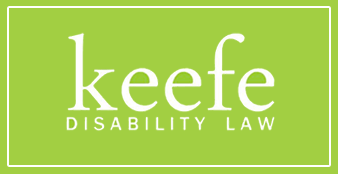
Understanding Agoraphobia and How You May Be Eligible to Receive Social Security Disability Insurance Benefits
Your heart races as you think about stepping out your front door. The thought of venturing into open spaces or crowded areas sends waves of unbearable panic through your body. Your chest tightens, your palms sweat, and an overwhelming sense of dread washes over you. This is the reality for those living with agoraphobia, a debilitating anxiety disorder that can make even the simplest tasks feel insurmountable.
For many individuals struggling with agoraphobia, the idea of maintaining employment or applying for Social Security Disability Insurance (SSDI) benefits can seem impossible. However, with the right information and legal support, it is possible to secure the financial assistance you need to focus on your health and well-being.
What Is Agoraphobia?
Agoraphobia is an anxiety disorder characterized by an intense fear of places or situations where escape might be difficult. This fear can manifest as heart palpitations, sweating, trembling, nausea, shortness of breath, and more. The experience can be so severe that people avoid leaving their homes altogether. Agoraphobia can significantly impact their quality of life and ability to function in society, including maintaining steady employment.
People with agoraphobia often avoid:
- Public transportation. Buses, trains, and airplanes can trigger anxiety due to their confined space and lack of easy escape. Even short journeys can be a source of intense stress.
- Open spaces. Parks and parking lots may feel overwhelming and expose individuals to perceived dangers. The vastness of these areas can trigger feelings of vulnerability and panic.
- Enclosed spaces. Retail stores, office spaces, and elevators can induce panic due to feeling trapped.
- Large crowds. Busy shopping malls, business areas, and entertainment venues may provoke episodes of intense anxiety because of the large number of people and the potential for chaos.
- Being alone. Some individuals with agoraphobia fear leaving their homes without a trusted companion. The thought of facing anxiety-inducing situations without support can feel paralyzing.
Agoraphobia Causes and Risk Factors
While the exact cause of agoraphobia is not fully understood, several factors may contribute to its development:
- Genetics. A family history of anxiety disorders may increase the risk of developing agoraphobia.
- Brain chemistry. Imbalances in neurotransmitters, particularly serotonin, may play a role in anxiety disorders.
- Environmental factors. Traumatic experiences, such as accidents or assaults, can trigger the onset of agoraphobia.
- Learned behavior. Growing up with anxious parents or witnessing traumatic events may contribute to the development of agoraphobic tendencies.
- Temperament. Individuals who are naturally more sensitive or prone to anxiety may be at higher risk for developing agoraphobia.
How Agoraphobia Impacts Your Ability to Work
Agoraphobia can significantly affect a person's ability to maintain employment. The anxiety disorder may interfere with various aspects of work life, making it challenging to perform job duties effectively:
Commuting to Work
Fear of driving in traffic or using public transportation can make it difficult to get to and from work reliably. Challenges with commuting can lead to chronic lateness, as they may need extra time to manage panic attacks if they can leave their home at all.
Consistent Attendance
Severe symptoms may prevent individuals from leaving their homes, leading to frequent absences. The unpredictable nature of panic attacks can make it challenging to commit to a consistent work schedule.
Productivity and Concentration
Anxiety and panic attacks can impair concentration and reduce work efficiency. The constant state of hypervigilance can make it difficult to focus on tasks and meet deadlines.
Social Interactions
Difficulties communicating with coworkers or customers can limit job opportunities and performance. Fear of social situations may prevent individuals from participating in meetings, presentations, or team-building activities.
Career Advancement Opportunities
Avoiding business travel or networking events may hinder professional growth. The inability to attend conferences, training sessions, or client meetings can limit career prospects and opportunities for advancement.
Physical Symptoms of Agoraphobia
The physical manifestations of anxiety, such as rapid heartbeat, sweating, and trembling, can interfere with job performance and create discomfort in the workplace.
Decision-Making Ability
Anxiety can cloud judgment and make it challenging to make vital work-related decisions, potentially impacting job performance and responsibilities.
SSDI Eligibility Requirements for Agoraphobia
To qualify for Social Security Disability Insurance (SSDI) benefits with agoraphobia, you must meet certain criteria established by the Social Security Administration (SSA):
- Work credits. You must have earned enough work credits through your employment history. The number of credits required depends on your age at the time you became disabled.
- Recent work. Some of your work credits must be from recent years, depending on your age. This requirement ensures that you have been contributing to the Social Security system relatively recently.
- Severity. Your agoraphobia must be severe enough to prevent you from engaging in substantial gainful activity (SGA). In 2023, the monthly SGA limit is $1,550 for non-blind individuals.
- Duration. Your condition must have lasted or be expected to last for at least 12 months or result in death. This duration requirement ensures that the disability is not a short-term or temporary condition.
- Age. While there is no specific age requirement for SSDI, your age may be considered in the evaluation process, particularly when assessing your ability to adapt to other types of work.
- Citizenship or legal residency. You must be a U.S. citizen or a legal resident to be eligible for SSDI benefits.
The SSA's Five-Step Evaluation Process for SSDI Applications
The Social Security Administration (SSA) uses a five-step evaluation process to determine if you qualify for SSDI benefits.
1. Current Work Activity
The SSA will first determine if you are currently engaged in substantial gainful activity (SGA). If you are earning more than the SGA threshold, you will not be considered disabled for SSDI purposes.
2. Severity of the Medical Condition
Your agoraphobia must significantly limit your ability to perform basic work activities. The SSA will evaluate the severity of your symptoms and how they impact your daily functioning.
3. Meeting or Equaling a Blue Book Listing
The SSA will determine if your agoraphobia meets or equals the criteria outlined in the SSA's Blue Book listing for anxiety disorders. You may automatically qualify for benefits if your condition meets or equals the listing.
4. Ability to Perform Past Work
If your condition does not meet or equal a Blue Book listing, the SSA will assess whether you can perform any of your past relevant work despite your limitations. This evaluation considers your residual functional capacity (RFC) and the demands of your previous jobs.
5. Ability to Adapt to Other Work
If you cannot perform your past work, the SSA will decide if you could perform any other jobs in the national economy, given your age, education, and work experience, plus the results of your RFC assessment.
The Relevant SSA Blue Book Listing for Agoraphobia
The SSA evaluates agoraphobia under Section 12.06 of the Blue Book, which describes anxiety and obsessive-compulsive disorders. To meet this listing, you must provide evidence of:
- Panic attacks, followed by a persistent worry about additional panic attacks or their consequences
- Heightened levels of fear or anxiety about at least two situations, like using public transportation or being in open spaces
- Extreme limitation or marked limitation of mental functioning, like interacting with other people or the ability to understand, remember, or apply information
- A documented history of the disorder as serious and persistent spanning at least two years
- Ongoing medical treatment, mental health therapy, or support with only marginal improvement
Compelling Medical Evidence to Prove Your Case
To strengthen your SSDI application for agoraphobia, it's crucial to gather comprehensive medical evidence that supports your claim. This evidence should clearly demonstrate the severity of your condition and how it impacts your ability to work. Examples include:
- Detailed psychiatric evaluations, including a formal diagnosis of agoraphobia and assessments of your functional limitations.
- Therapy session notes from your psychologist or therapist, providing insight into the ongoing challenges you face
- Medication records, including all prescribed medications, their dosages, and any side effects
- Hospital records for severe episodes
- Daily functioning reports from you and others, like family members, friends, or former coworkers
- Questionnaires completed by your treating mental health professionals
- Work history and attempts to work, documenting any failed attempts to maintain employment due to your agoraphobia symptoms
How a Massachusetts Disability Lawyer Can Help
The experienced team at Keefe Disability Law can provide valuable assistance throughout the SSDI application process.
- Gather and organize medical evidence
- Complete application forms accurately
- Communicate with SSA on your behalf
- Prepare you for consultative exams
- Represent you at hearings if necessary
- Provide ongoing support and guidance
Don't let agoraphobia prevent you from seeking the SSDI benefits you deserve. We understand the unique challenges you face and are here to guide you through every step of the way. With our extensive knowledge of SSDI regulations and years of experience handling agoraphobia cases, we can help maximize your chances of approval.

